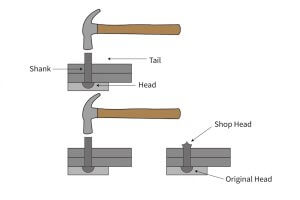The advent of CNC machining has brought about a revolutionary change in the manufacturing industry. It has automated the process of creating precise parts by employing computer programs to control the CNC machines. The quality of the final product greatly relies on the accuracy and precision of the machining tools used. In this article, we will delve into the significance of selecting the appropriate CNC machining tools to guarantee the production of high-quality end products.
The Significance of Selecting the Right CNC Machining Tools
The selection of the right CNC machining tools holds paramount importance in the creation of top-notch custom parts. The tools utilized in CNC machining encompass drills, end mills, boring tools, and reamers, among others. The quality and variety of these tools have a substantial impact on both the quality and cost of the final product.
Employing an improper tool or one that is not specifically designed for the given task can lead to substandard parts, increased wear and tear on the machine, and extended downtime due to tool breakage or replacement. Conversely, the utilization of high-quality tools that are tailored to the specific task at hand can enhance efficiency, minimize wastage, and yield high-quality parts that conform to the required tolerances.
Recommended Read: Troubleshooting Common CNC Machining Problems
Factors to Consider When Selecting CNC Machining Tools
Various factors should be taken into account when choosing CNC machining tools, including the material to be machined, the desired tolerances, the intended surface finish, and the available machine horsepower. Let’s delve into the crucial factors that need to be considered while selecting CNC machining tools.
Material Being Machined
The nature of the material being machined stands as a critical factor when it comes to tool selection. Different materials possess distinct properties that influence the machining process, such as hardness, toughness, and ductility. Certain materials, like aluminum, are softer and easier to machine, whereas others, such as titanium, are harder and necessitate more robust tools.
For instance, machining stainless steel requires a different approach compared to machining aluminum. Stainless steel, being harder, demands greater cutting force, which implies that tools made from high-speed steel or carbide are better suited for the job. On the other hand, aluminum, being softer, can be machined more effectively using high-speed steel tools.
Required Tolerances
The desired tolerances of the final part stand as another pivotal aspect when choosing machining tools. Tolerances refer to the permissible deviation from the desired dimensions and are typically measured in thousandths of an inch or micrometers.
For parts that require utmost precision with tight tolerances, such as aerospace components, tools boasting high accuracy and precision are imperative. Conversely, parts with looser tolerances, like certain automotive components, may necessitate less precise tools.
Recommended Read: Avoiding 5 Common Mistakes in CNC Machining
Desired Surface Finish
The desired surface finish represents another factor to ponder while selecting machining tools. Surface finish pertains to the texture or smoothness of the surface of the final part. Certain parts may require a smooth surface finish due to aesthetic or functional reasons, such as reducing friction or enhancing corrosion resistance.
Tools with a higher number of cutting edges, known as flutes, can yield a smoother surface finish. Additionally, coatings like titanium nitride or diamond-like carbon can also augment the surface finish.
Available Machine Horsepower
The available machine horsepower constitutes a vital consideration in the selection of machining tools. A more powerful machine can handle larger and more intricate parts; however, it necessitates tools capable of withstanding the augmented cutting forces.
The utilization of tools that are not specifically designed for the machine’s horsepower can result in excessive machine wear and tool breakage. Hence, it is imperative to opt for tools that are tailored to the machine’s horsepower to ensure optimal efficiency and durability.
Types of CNC Machining Tools
Now that we have explored the pivotal factors to consider when selecting CNC machining tools, let’s delve deeper into some of the most common types of machining tools.
Drills
Drills rank among the most prevalent types of machining tools employed in CNC machining. They are utilized to create holes in various materials, including metal, plastic, and wood. Drills are available in diverse sizes and shapes, including twist drills, center drills, and spot drills.
Twist drills stand as the most common type, used for drilling holes in a wide array of materials. Center drills aid in creating a starting point for larger drills or other machining tools. Spot drills are instrumental in creating shallow holes that facilitate the accurate positioning of larger drills.
While selecting a drill, it is crucial to consider the material being drilled, along with the required hole size and depth. Opting for the appropriate drill size and shape aids in ensuring a clean, precise hole with the desired dimensions.
End Mills
End mills represent another widely used type of machining tool in CNC machining. They are employed for creating flat surfaces and contours on various materials, including metal, plastic, and wood. End mills are available in diverse sizes and shapes, such as square, ball nose, and corner rounding.
Square end mills serve as the most common variety, employed for general milling operations. Ball nose end mills come in handy for creating curved surfaces, while corner rounding end mills are instrumental in producing rounded corners.
When selecting an end mill, it is crucial to take into account the material being machined, as well as the desired surface finish. The number of flutes on the end mill can also impact the surface finish and chip removal.
Boring Tools
Boring tools are employed for creating precise holes with a high level of accuracy and precision. They are commonly used in the production of engines, gearboxes, and other components that require meticulous hole creation. Boring tools come in diverse sizes and shapes, including indexable and solid carbide varieties.
Indexable boring tools are designed for multiple uses and feature replaceable cutting edges. Solid carbide boring tools, on the other hand, are crafted from a single piece of carbide and are generally more expensive but offer exceptional precision and accuracy.
While selecting a boring tool, it is imperative to consider the required tolerances and the material being machined. Boring tools necessitate a high degree of stability to achieve the desired precision, thus selecting the correct tool holder assumes significance.
Reamers
Reamers are employed for creating precise holes with a smooth surface finish. They are commonly utilized in the production of engine cylinders, valve guides, and other components that require tight tolerances and a smooth surface finish. Reamers come in diverse sizes and shapes, including hand and machine reamers.
Hand reamers are employed for manual operations and feature a square drive that is rotated using a wrench or hand tool. Machine reamers are designed to be used in CNC machines and feature a shank that is held in a tool holder.
While selecting a reamer, it is vital to take into account the material being machined, along with the required tolerances and surface finish. Opting for the correct reamer aids in ensuring a smooth, precise hole with the desired dimensions.
Recommended Reading: Mastering the Art of 5-Axis CNC Machining
Conclusion
The selection of the appropriate CNC machining tools holds critical significance in the production of high-quality parts that conform to the required tolerances and surface finish. While selecting machining tools, it is vital to consider factors such as the material being machined, the desired tolerances, the intended surface finish, and the available machine horsepower.
Drills, end mills, boring tools, and reamers stand as some of the most commonly used machining tools in CNC machining. Choosing the correct tool size, shape, and material aids in achieving clean, precise cuts with the desired dimensions.
By investing time and effort into selecting the right CNC machining tools, manufacturers can enhance efficiency, minimize wastage, and produce high-quality parts that meet the requirements of their customers.
Learn more guide here.









